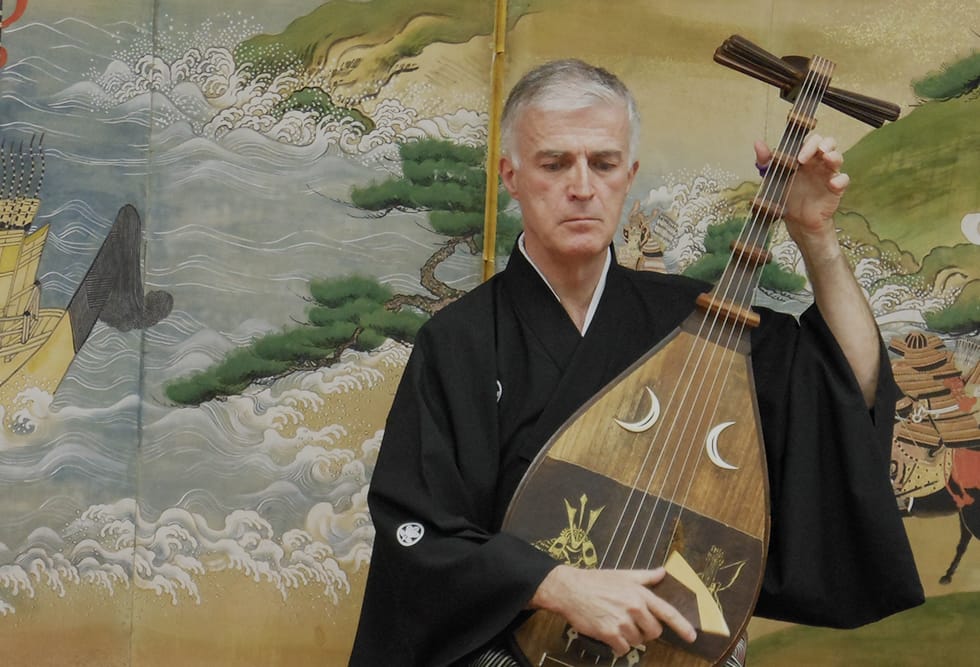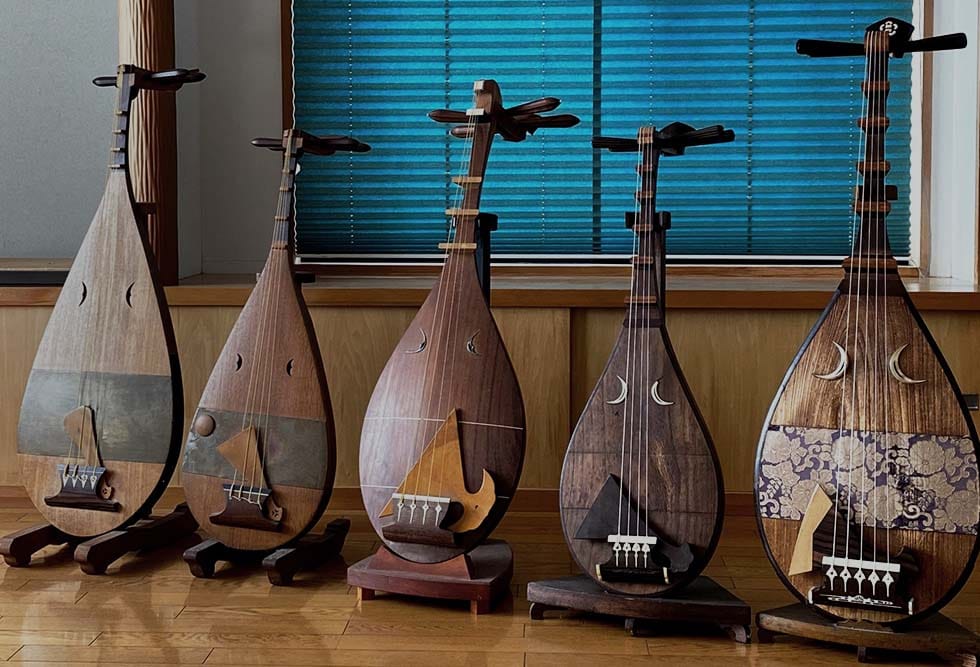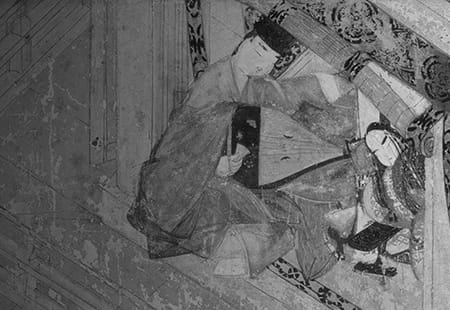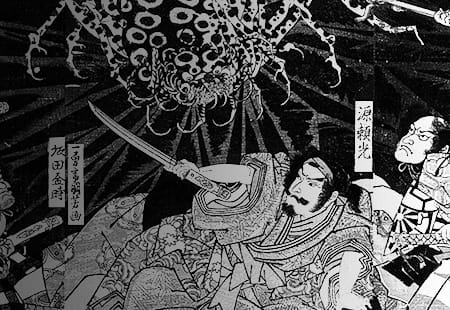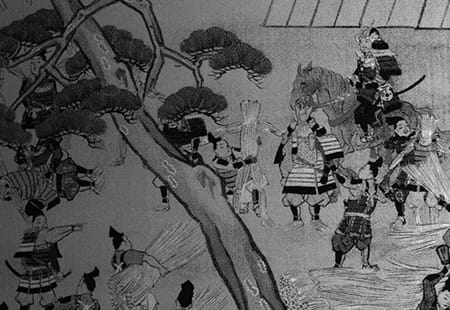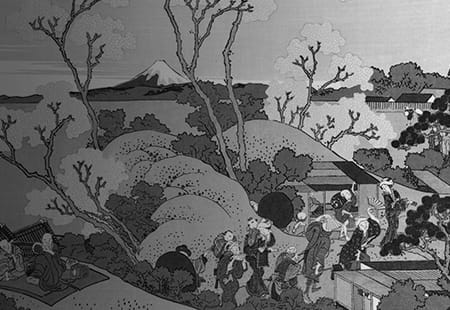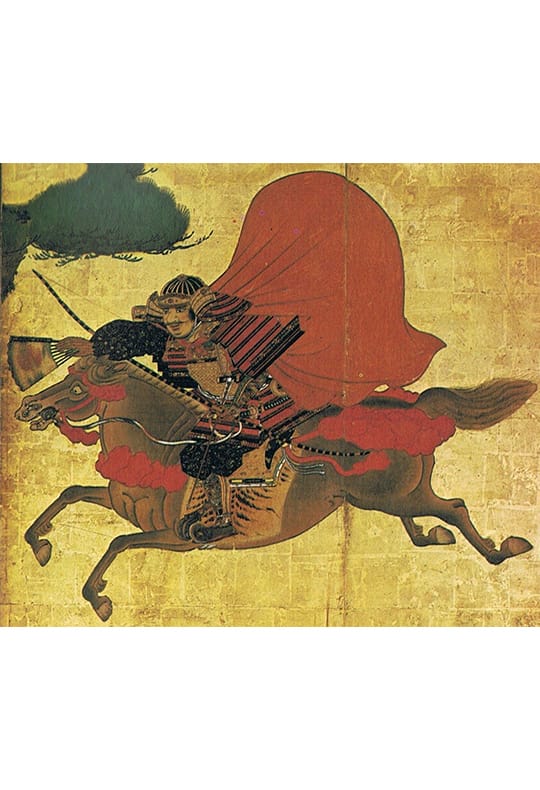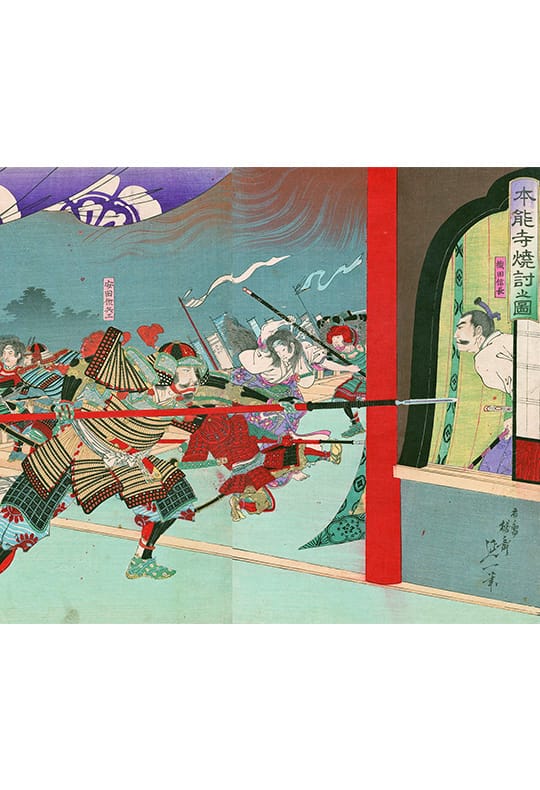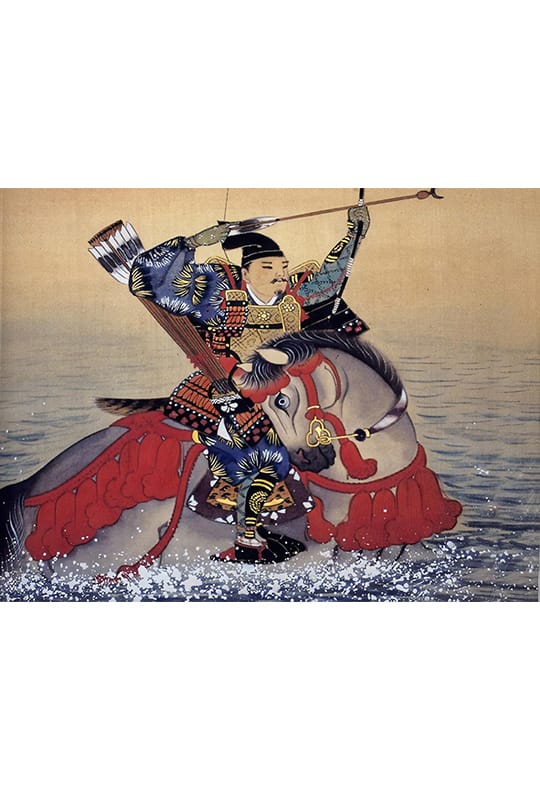 Profound Sounds of the Biwa:
Profound Sounds of the Biwa:
The Aesthetics of Narrative
The biwa entered Japan approximately 1300 years ago as part of the Japanese importation of mainland culture. Despite its association with court and "Chinese" culture, it nonetheless soon came to be associated with indigenous narrative practice or katari. In this practice, the reciting or chanting story-teller accompanies himself to the accompaniment of the biwa. The instrument is used to illustrate various aspects - appearance, personality, emotional states, and more - of the characters populating these tales.
This website provides both a historical introduction to the biwa, and in-depth discussions of a selection of pieces from the chikuzen biwa repertoire accompanied by the author's performances.
This website is designed for music lovers and scholars who may be aware of the biwa but have no concrete knowledge of its history, repertoire, and performance. The author and his collaborating team hope that this will provide a basic understanding of one Japanese narrative art and its repertoire, and promote an interest in this art.
Silvain Kyokusai GUIGNARD
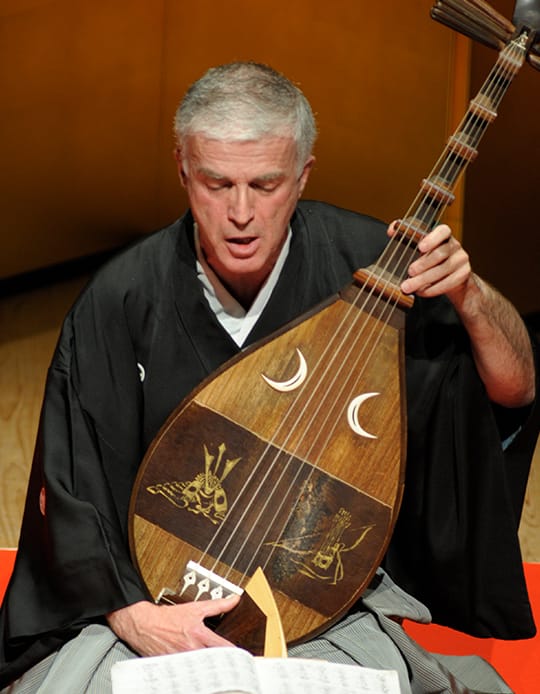
Library of
Biwa Ballads
We invite you to enter the world of the biwa and enjoy the moving stories of bravery and valor, which will be facilitated with extensive explanations and translations.
keywords

A traditional Japanese Lute Biwa
The biwa, a string instrument performed with a large and heavy plectrum, originated in Ancient Persia.
It travelled the Silk Road and arrived in Japan at some point in the 7th or 8th century via China. In Japan, it was an indispensable instrument in gagaku, an orchestral music associated with Buddhist temple and imperial court culture, this association leading it to be referred as gaku biwa.
The instrument was also used to accompany the recitation and chanting of Buddhist sutras. This practice played a vital role in the formation of what may be Japan's first narrated epic tale, The Tale of the Heike. Its performers were all blind men of quasi-religious status. This narrative art became the progenitor for all subsequent biwa forms, including the chikuzen biwa, which appeared at the end of the 19th century.

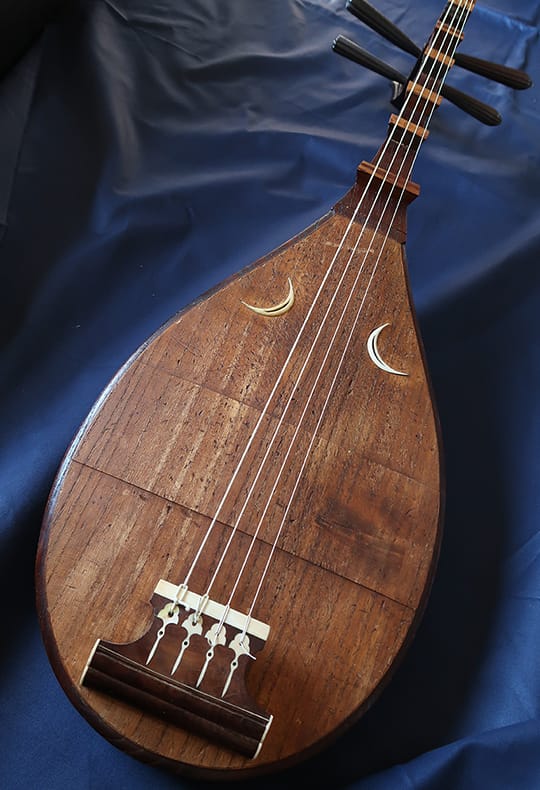
Ballads Noted
for the Beauty
of their Musical Setting
About the project
Silvain Kyokusai GUIGNARD
Born in 1951 into a family of artists and musicians in Switzerland, Silvain GUIGNARD completed his teaching qualifications for piano at the Conservatory of Zurich in 1975. He then completed a Ph.D. on Chopin's waltzes at the University of Zurich in 1983. This same year, he moved to Japan to pursue an understanding of the biwa, but soon was entranced by the chikuzen biwa. While pursuing a postgraduate course at Osaka University, he began studying under YAMAZAKI Kyokusui, a Living National Treasure,
who died in 2006. He continued his studies under OKUMURA Kyokusui, also a Living National Treasure. GUIGNARD was awarded the artistic name of "Kyokusai", and has been widely active as a performer in Japan and abroad.

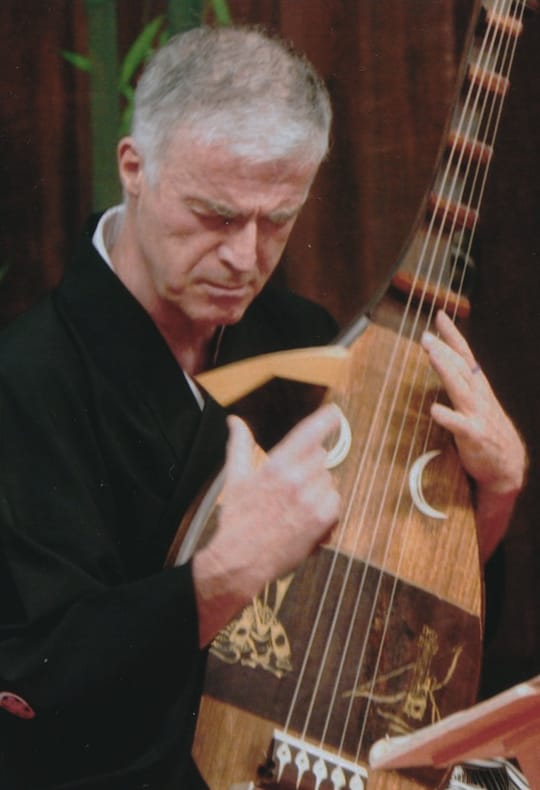
About the project
Promotion of the Biwa and its Art
My primary aim in creating this website is to share my fascination with chikuzen biwa with the world. Even in Japan, chikuzen biwa is not a well-known performance art.
I truly hope that this project will promote a wider understanding and appreciation for this remarkable art form.
I have spent twenty years with this project, and it is only through the help, cooperation, and patience of three noted researchers that this website came to fruition.
The website begins with an historical introduction to the biwa and is followed by an in-depth discussion of the musical characteristics of the chikuzen biwa, its performance techniques, the instrumental and vocal notation system,
and more. The final section discusses the present state of this art in Japan.
All of the twenty-two pieces in this Library of biwa Ballads are accompanied by a historical introduction, a synopsis, a musical commentary, modern Japanese renditions, and translations in German and English. The author hopes this will assist in the dissemination of knowledge and appreciation of this art to those outside Japan.
GUIGNARD Kyokusai's
favourite ballads
The Recording Collection
-
安達ヶ原 adachigahara
A man-devouring demon disguised as an old woman
-
羅生門 rashomon
WATANABE Tsuna as he cuts off the hand of the demon, Ibaraki
-
茨木 ibaraki
The demon Ibaraki retrieving its severed hand
-
土蜘蛛 tsuchigumo
The ghostly Earth Spider attacks Lord Yorimitsu
-
隅田川 sumidagawa
A mother searching for her abducted son
-
都落ち miyako ochi
A warrior longing for poetry
-
熊谷と敦盛 kumagai to atsumori
A senseless killing on the battlefield
-
屋島 yashima
Tsuginobu is dying for his lord
-
那須与市 nasu no yoichi
The felicitous shot of a young archer
-
壇の浦 dannoura
The decisive last battle between the GENJI and the HEIKE
-
壇の浦 悲曲 dannoura hikyoku
The drowning of the child-emperor Antoku
-
舟弁慶 funa benkei
A fight with the specters of fallen warriors
-
安宅 ataka
The warrior monk Benkei at the barrier gate
-
衣川 koromogawa
The Last Hours of the hero Yoshitsune
-
大楠公 dainanko
Lord KUSUNOKI, a beacon of loyalty
-
本能寺 honnoji
The rebellion against Lord Nobunaga
-
湖水渡 kosui watari
The famous crossing of Lake Biwa on horseback
-
関ケ原 sekigahara
A treasonous act of great consequence
-
伽羅の兜 kyara no kabuto
The perfumed helmet
-
曲垣平九郎 magaki heikuro
A glorious equestrian feat
-
平野国臣 hirano kuniomi
A righteous man languishing in prison
-
西郷隆盛 saigo takamori
The Last Samurai
